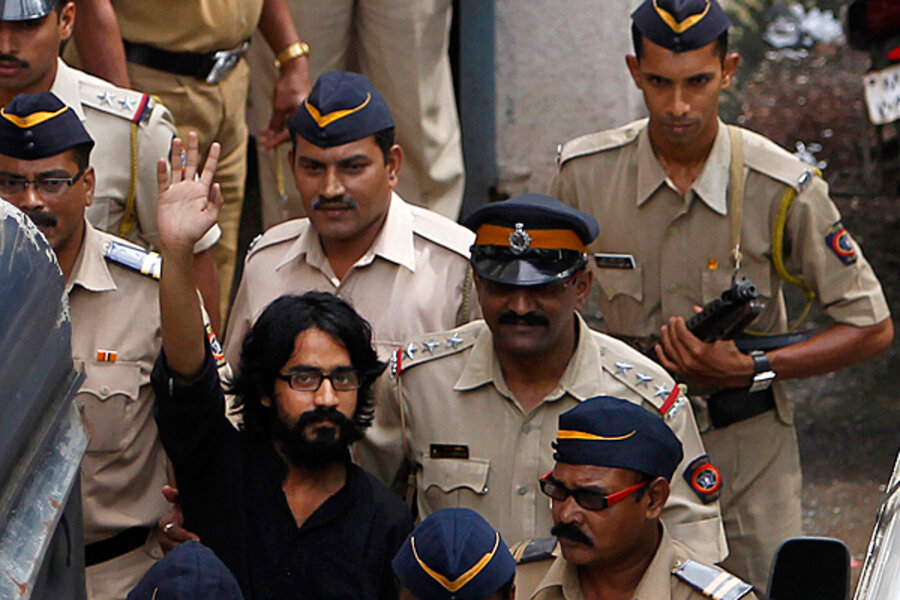Indian artist jailed for anticorruption cartoons
Loading...
| New Delhi
A political cartoonist in India has been arrested on charges of sedition, violating an online content law, and insulting national honor for a series of cartoons sharply critical of corruption in the government.
Aseem Trivedi's arrest Saturday took place nine months after he displayed the cartoons at a demonstration in Mumbai calling for the creation of an anticorruption ombudsman in the Indian government to punish officials for graft.
Outrage over Mr. Trivedi's arrest spread across social media and dominated headlines here over the weekend. Trivedi was quickly offered bail, but the cartoonist has decided to keep the spotlight on the government's actions by refusing bail and staying behind bars. Trivedi is arguing that the onus is on the government to drop the case. The three charges, if actually prosecuted, would carry up to three years in jail.
The arrest of a cartoonist on such serious charges unnerves some observers who argue the embattled elected government is increasingly harassing its opponents.
“The police is obliged to study the law before acting on a complaint. The sedition law clearly states it applies only when there is violence or threat of violence,” said Sukumar Muralidharan, South Asia program coordinator with the International Federation of Journalists. “The misuse of the law suggests there may be a deeper political purpose to the arrest. There has been increasing intolerance toward dissent by the ruling government in India and this may be seen as part of that,” he said.
Other recent examples of government combativeness with critics include an effort by the prime minister's office to get the Washington Post to apologize for a story that described Manmohan Singh as a "tragic figure," and the defense of new Internet content laws that allow the government and individuals alike to ask for "offensive" online content to be removed.
In an interview before taking a train from Delhi to Mumbai to surrender to the Mumbai police, Trivedi said his cartoons could at best be described as "bold," as they depicted politicians as being disrespectful of the country, but that he in no way intended to insult national symbols.
There are several controversial cartoons that petitioners have objected to. The first one is titled “Gang rape of Mother India." It shows a woman dressed in the colors of the Indian flag being assaulted by a politician and a bureaucrat, as a beast labeled "corruption" looks on gleefully.
Two other cartoons mock the Indian Parliament, one shows it as a commode and another as a sewage tank. These cartoons demand, in addition to an anticorruption ombudsman, the right to recall, which allows citizens to disqualify an elected representative mid-term.
Some Indian officials like Maharashtra state minister R. R. Patil have spoken out against Trivedi's arrest, and it's not clear the government drove the case forward. The petitioner who pushed for Trivedi to be arrested is Amit Katarnawre, a 27-year-old railway employee in Mumbai. Mr. Katarnawre said on the phone from Mumbai he believed the cartoons intended deliberate insult to India’s national symbols.
Katarnawre hails from the Dalit (formerly "untouchable") community whose icon, B. R. Ambedkar, was chairman of the drafting committee of the Indian Constitution and was opposed to Mahatma Gandhi. The protest where Trivedi displayed his cartoons were led by Anna Hazare, a Gandhian social activist.
Trivedi's banners also gave the address of the website, cartoonsagainstcorruption.com, which the domain registrar immediately suspended on orders of the Mumbai police. The cartoons, however, are still available at cartoonsagainstcorruption.blogspot.com. Since then, Trivedi became a full time campaigner against Internet censorship in India. In May, he sat on a hunger strike for seven days to demand the annulment of Internet censorship laws.





